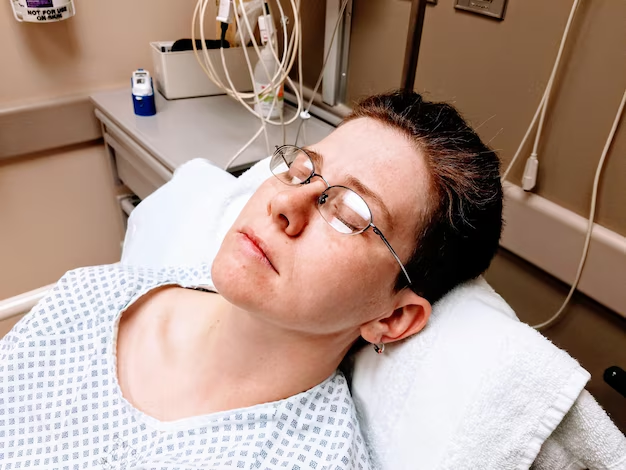Safe Driving After Cataract Surgery: What You Need to Know
Cataract surgery is a common and generally safe procedure that can dramatically improve your vision. However, one of the most pressing questions many patients have is when they can safely return to driving. Specifically, is it advisable to drive just two days after undergoing cataract surgery? This article explores various factors that influence when it's safe to get back on the road, offering insights and guidance to help you make informed decisions.
Understanding Cataract Surgery
What is Cataract Surgery?
Cataract surgery involves replacing a cloudy lens in your eye with a clear artificial one. This surgery is usually performed on an outpatient basis and is a standard procedure for those experiencing impaired vision due to cataracts. Recovery is typically quick, but it's essential to adhere to certain precautions to ensure optimal healing.
How Cataract Surgery Affects Your Vision
After surgery, improved clarity is often immediate. However, your eye might require some time to adjust fully. You might experience symptoms like blurry vision, light sensitivity, or the need for new eyeglasses or contact lenses.
Driving After Cataract Surgery: Key Considerations
Immediate Post-Surgery Period
Directly following the surgery, you will need someone to drive you home. This is because the effects of sedation or anesthetic used during the procedure make it unsafe for you to drive yourself.
Why Waiting is Important
Initial Recovery: The first 24 to 48 hours post-surgery are critical. Your vision may be blurry, and driving during this time can be dangerous due to decreased reaction time and potential discomfort.
Night Vision Adjustments: Cataract surgery can temporarily affect your night vision. Halos around lights and increased glare are common, which can make nighttime driving risky until these symptoms subside.
When Is It Safe to Drive?
General Guidelines
Most doctors recommend waiting at least a few days to a week before resuming driving. However, this can vary based on individual recovery rates and medical advice. It’s important to follow up with your healthcare provider for personalized guidance.
Factors Impacting Safe Driving
Vision Clarity: Ensure your vision has improved sufficiently before getting behind the wheel. You should confidently pass a vision test matching the legal requirement to drive.
Comfort with Reduced Glare: Practice navigating areas with bright lighting before attempting to drive. Use sunglasses to manage light sensitivity.
Follow-up Checks: Attend all scheduled post-operative appointments. Your ophthalmologist will assess your healing process and confirm when driving is safe.
Eyes on the Road: Practical Steps to Returning to Driving
Conduct a Self-Assessment
Before considering driving, try walking outside during different times of the day and in various weather conditions. Ensure you’re comfortable with your vision in changing light situations.
Practice Journeys
Start with small trips around familiar neighborhoods to rebuild confidence. Avoid highways or congested areas until you feel fully comfortable.
Use Protective Eyewear
Wearing sunglasses can help minimize glare and light sensitivity, making the driving experience more comfortable.
Managing Expectations and the Healing Process
Temporary Visual Disturbances
Be prepared for some changes in your vision during the healing process. Color perception may seem vibrant, and this visual shift requires an adjustment period.
Long-term Changes
If lenses were replaced, you might need new prescription glasses for reading or detailed work. Plan for an eye exam a few weeks post-surgery to update your prescription.
Personal Recovery Timeline
Remember, recovery is unique to each individual. Factors like age, medical history, and any additional eye conditions can influence your healing rate. Don't rush the process—safety is paramount.
Understanding Legal Responsibilities
Know the Driving Requirements
Ensure you meet the legal vision standards for driving in your area. In most places, this means having a visual acuity of at least 20/40 with or without corrective lenses.
Inform Your Insurer
Some insurance policies may require notification if you've undergone surgery impacting your ability to drive. Check with your provider to ensure you're covered.
The Road to Confidence
Building Driving Confidence
Once you start driving again, frequent short drives can help reinforce driving skills and build back your confidence. Always prioritize safety and never hesitate to pull over if you feel uncomfortable.
Feedback from Passengers
Take along a trusted passenger during your initial rides to provide guidance and feedback, helping you gauge when you're truly ready for solo driving again.
Closing Insight: Embrace a Cautious Approach
Ultimately, the key to resuming driving after cataract surgery lies in being patient and attentive to your healing process. Monitor how your eyes feel and perform on a day-to-day basis, progressively easing back into your driving routine. By taking the necessary precautions and staying informed, you’ll get back on the road safely and with peace of mind.
Summary of Key Points 📋
- Immediate Restriction: Do not drive immediately after surgery; arrange for transportation.
- Wait Period: Generally recommended to wait a few days to a week before driving.
- Vision Clarity: Ensure your vision is clear and stable before hitting the road.
- Comfort Below Glare: Can manage glare effectively with sunglasses.
- Medical Approval: Get clearance from your ophthalmologist before driving.
- Start Slow: Begin with short, familiar routes to regain confidence.
- Legal Check: Ensure compliance with legal vision standards for driving.
- Insurance: Notify your insurance provider if necessary.
By prioritizing your safety and well-being, you ensure a smooth transition back to your daily driving routine following cataract surgery. 🚗✨

Related Articles
- Are Cataracts Curable
- Are Cataracts Genetic
- Are Cataracts Hereditary
- Are Cataracts Nuclear Sclerosis
- Are Cataracts Painful
- Are Ivizia Eye Drops Okay After Cataract Surgery
- Are You Awake During Cataract Surgery
- Are You Awake For Cataract Surgery
- Are You Put To Sleep For Cataract Surgery
- Are You Sedated For Cataract Surgery